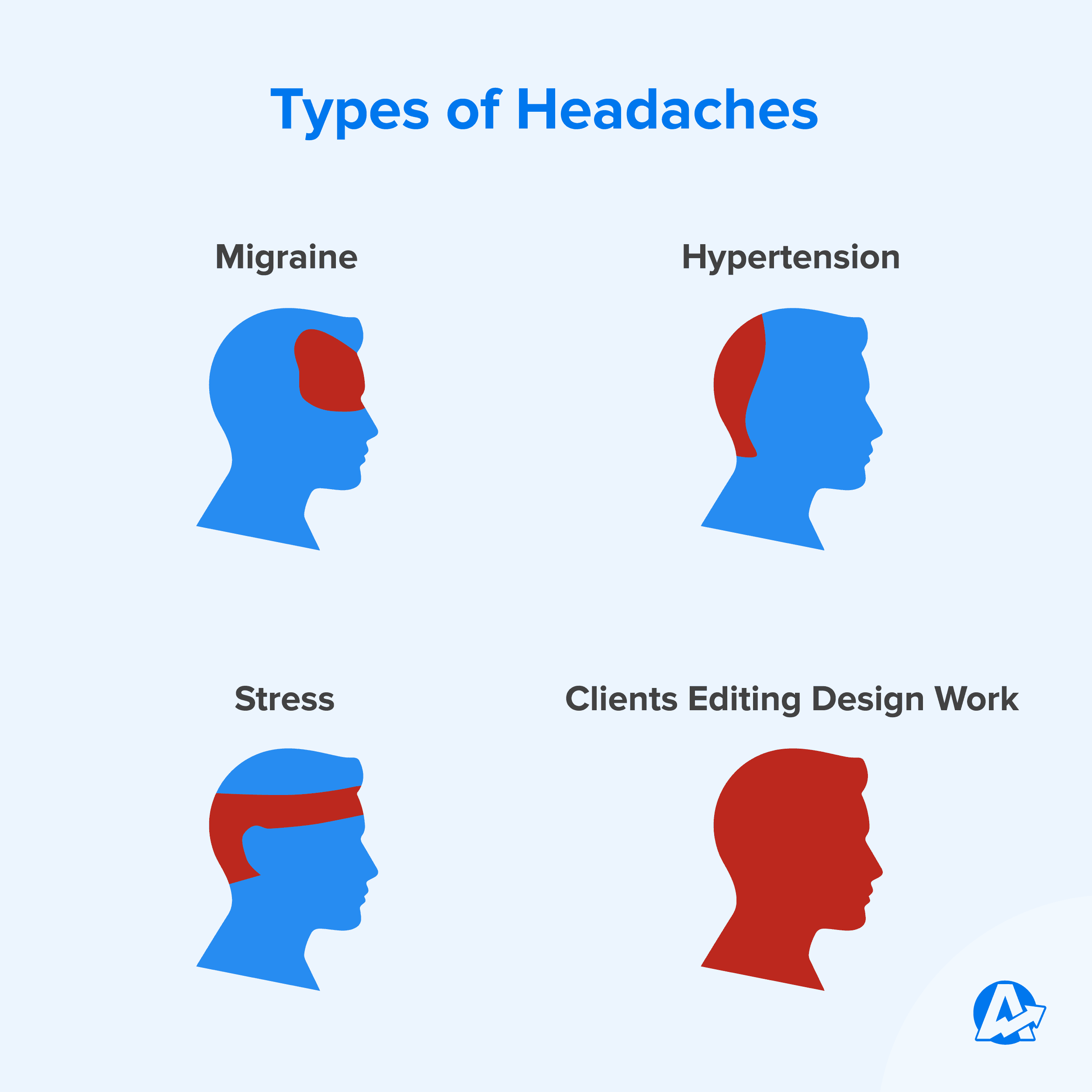Table of Contents
QUICK SUMMARY:
Scope creep refers to unplanned changes or expansions in a project's scope, often subtly altering initial goals. This concept, common in project management, presents challenges but also opportunities for strategic adaptation and innovation. This article has strategies to transform scope creep from a stress source into a catalyst for project success, offering insightful approaches for client campaign managers to navigate and utilize these changes.
Scope creep. For agency owners and staff, it’s the stuff of nightmares. You might not know exactly what falls into the category of “scope creep” and what’s just normal client back-and-forth, but you have the nagging sensation that something isn’t adding up. If your clients are getting frustrated and your project managers aren’t getting anything “done,” you may have a scope creep crisis on your hands.

But what sets aside the most successful agencies from the rest is this nugget of golden knowledge: project scope creep is a natural opportunity to upsell your clients–and best of all, it’s usually they who request it.
This is your ultimate guide to defining scope creep, identifying the causes, understanding the impact it has on your business, and dealing with it in a way that adds to your recurring revenue and helps your agency grow.
What Is the Scope of a Project?
In project management practices, scope refers to defining the project deliverables, project timelines, and the work required to output said deliverables. Scoping a project is the essential preliminary planning of what your agency will create, produce, or deliver and how you will do it.
Crucially, defining project scope should mean that anything not defined in the scope will not be included in your process or your output. But as we know, this isn’t always the case.
Scope planning usually answers the following questions:
What goals are we trying to achieve?
Who are the project sponsors, and what is their scope of responsibility?
What deliverables will we complete to achieve these goals?
What are the milestones and deadlines for each deliverable?
What are the key accountabilities of each party: the agency and the client?
What KPIs or metrics will we track to evaluate our success?
What is the budget and anticipated cost of this project?
Who will do the work?
How and when will we need client participation?
Will external resources be required?
And, of course, this is part of the problem. Human beings have a tough time wrapping their minds around the undefined. So while your project scope planning may define what you will do and what you will produce, it doesn’t define every single thing that you won’t do and won’t produce–and it’s because of this lack of definition that line items, tasks, revisions, workarounds, and other extras get pulled in.
That’s a job for your project managers.
What Is Scope Creep in Project Management?
Scope creep, as the name implies, is a project management term that means subtle or overt changes to the project that alter or expand the original goals. But putting aside the dictionary definition, scope creep is the perfect example of a slippery slope. Just as a slippery slope may appear harmless at first, you can quickly find yourself out of control. Scope creep is the same way–at first, you might not even spot it, and before you know it, the project is snowballing beyond its original objective and becoming increasingly difficult to manage.

You probably know it as the 12th round of revisions on a landing page or a drastic shift in direction on a social media campaign your team just finalized. Maybe it’s a last-minute change of budget for a PPC campaign or the client being unavailable to provide crucial information.
We bet you have your own tried-and-true project scope planning process at your agency, precisely because you’re already familiar with scope creep. And you likely have designed and refined that process in an attempt to be as clear as possible for your clients and your employees.
But scope creep can be a lot more subtle and a lot more damaging than just the obvious examples. It can also be a lot trickier to deal with than you might initially think. (Hint: having a scope planning call or a SOW document isn’t always enough.) That’s why we’ve written this article: to make you aware of the real problems scope creep causes and to teach you the way the most successful marketing agencies deal with it.
Let’s get going.
Why Does Scope Creep Suck So Much?
Here’s the thing. Your project managers aren’t moaning about scope creep because they don’t want to work. Scope creep is a genuine problem with serious consequences for your staff, your customers, and your marketing agency overall. When scope creep rules the roost at your agency, almost everything from morale to agency margin goes down. The one thing that goes up? Costs.
“The biggest challenge is balancing the needs and expectations of the clients while maintaining the scope of your agreement—and personal and professional boundaries,” explains Michael Quinn, Founder of My Site Ranked.

“It can be tempting to simply bow to every demand, no matter how unreasonable it may be, just for the sake of keeping a client happy. However, this could lead to an unhealthy work environment for you and/or your employees—not to mention lost revenue. Striking that delicate balance between retaining clients while also protecting your business's values is often tricky but essential to success.”
Here’s a closer look at how scope creep damages your business.
The Work You Do
Quality: When work becomes more complex, quality inevitably takes a hit. This can be for a range of reasons, from staff not having the capacity to do their usual Q&A, to confusion or miscommunication when briefs are no longer accurate or when key players are left out of the loop.
Deadlines: When the work becomes bigger than what was initially agreed to, any time estimates or timelines that you gave to your client become meaningless; it likely isn’t possible to complete the work with its new scope in the same timeframe. Or, because of the long hours being sunk into one client’s project, another client’s work takes a back seat.
Agency Productivity: As the project scopes expand, your agency staff can’t close out projects. So they might constantly be working, but nothing gets marked as finished or completed.
The Health of Your Marketing Agency Overall
Costs: The cost of your time and resources goes up as the scope increases. Whether it’s revising the design for the umpteenth time, purchasing additional stock footage, rewriting the email campaign, or conducting further research and analysis based on the new ask, your staff, and your freelancers are going to rack up more billable hours. The worst part is you might not have a clear idea how exactly how much extra this is costing you–and this is exactly how some projects creep their way into being a loss.
Profitability: It’s basic math. When costs go up and productivity goes down, your bottom line takes a hit.
Cashflow: Depending on the agreements you have in place, you might not get paid in full until the work is done. Scope creep can cause serious cash flow problems if left unchecked.
Competitiveness: Over time, scope creep affects your agency’s reputation for delivering quality work on time. Staff burnout, coupled with dissatisfied clients, can lead to stagnation.
The People That Fuel Your Agency
Client satisfaction: Your clients are getting their way, so you’d think they’d be stoked, right? Think again. Scope creep can kill client satisfaction over the long term when it leads to missed deadlines, lower quality deliverables, high staff turnover (“This is the third A.M we’ve had in a year!”), and a soured relationship between the customer and the agency.
Team morale: Scope creep can lead to staff burnout. You can have all the bottomless coffee and slick task management tools in the world. Nobody wants to feel like they’re running on a hamster wheel and can’t keep up. You want to set your team up for success by creating a company culture where hard work is rewarded with a sense of accomplishment, not punished by making them undo and redo the work endlessly.
When agencies can’t keep their PMs, fire bells clang in my head. Project management is a leading indicator in your business that tells you how healthy your people are, how solid your delivery margin is, and whether you can count on repeat client revenue six months from now. If PMs cycle through your agency like a revolving door, this tells me your agency is on fire or very soon will be.
–Rachel Gertz
What Causes Scope Creep?
OK, so we’ve refreshed your memory on scope, defined scope creep for marketing agencies specifically, and given a detailed overview of its negative consequences. As an agency owner, you understand that you must prioritize your preventative measures–and response–to scope creep.
Now let’s talk about why it happens in the first place: understanding the most common causes of scope creep helps define how to overcome scope creep.
So, what causes scope creep? Why does it happen? In short, a lack of knowledge and a lack of #boundaries. Usually, the project manager or project team members do not feel empowered to be on the lookout for scope creep or to hold their ground and enforce the scope of the project.
Here are some of the common reasons scope creep happens:
The agency doesn’t emphasize the importance of the client’s role when creating briefs
The agency doesn’t make the client’s expectations and accountabilities clear within the project requirements, such as the timeline to provide feedback or being prepared for discovery calls
The agency fails to train staff to continuously evaluate client requests, including a change control process to manage the work being done against the scope
The agency fails to convey the complexity of the project to the client in an understandable manner, or–perhaps worse–the agency itself doesn’t have an accurate grasp of the complexity of the project
The agency doesn’t secure enthusiastic client agreement regarding project objectives, project tasks, and how to handle scope changes
The agency doesn’t define project scope thoroughly and definitively in a way that project stakeholders understand what is and what is not included
The agency doesn’t resolve a communication breakdown or lack of involvement with the client or project sponsor
The agency mismanages its time or doesn’t prioritize the project properly
The agency has not provided a project schedule or regular updates regarding the progress against the project's objectives
The agency disempowers project managers to say no to the client in order to mitigate scope creep before it happens
Notice how the onus is on the agency and not the client? Control what you can. While shifting the blame to the client might be nice for your ego, it doesn’t help with your scope creep problem.
There are also a few causes of project scope creep that agency's like to believe are caused by the client, but even those can often be tied back to issues with the project plan. Such as:
The client submitting unnecessary change requests or requesting unnecessary features. If there is too much wiggle room regarding change requests within the project plan, you're opening your agency up to a world of scope creep hurt.
If the client suddenly comes to the table with unrealistic expectations mid-way through a project, then something went wrong in the sales, onboarding, and project planning states. Poor communication between key stakeholders at the start of the project often leads to scope creep issues throughout the entire project.

Agency Tip: When discussing scope creep at your marketing agency, we recommend you reframe your team’s thinking. If you have to talk about fault, shift the blame away from your clients and onto yourselves. It’s counterintuitive, but it empowers you to proactively deter scope creep from here on out.
There’s only one other common cause of scope creep, and there’s no realistic way to reframe this one with the onus on your agency:
Major unforeseen circumstances or problems arise for the client that necessitates changes to the project (e.g., change of leadership, major related current events, etc.)
The good news is, barring a C-Suite coup or a tornado in your client’s neighborhood, managing scope creep is possible–with training and preparation, you can vanquish almost all of your scoping problems.
Teaching The Skills To Save Your Agency From Scope Creep
As the owner or leader of a marketing agency, you’re the lifeguard and this is your pool. And nobody–not your PMs, not your agency–is drowning on your watch. It’s your job to teach your project managers how to swim–or in this case, how to prevent scope creep from pulling them under. This doesn’t have to be complicated or rehearsed: just ongoing, honest conversations. Discuss with your team regularly about what scope creep is, common scenarios where project scope creep occurs at your agency, and workshop ways to respond.
In particular, if you have account managers who are inexperienced or who are uncomfortable saying no to a client, make sure you’re dedicating time on an ongoing basis to help them overcome their discomfort and address scope creep in a polite, professional manner.
Remind them that saying no isn't about letting the client down, it's about ensuring project success by focusing on the priorities required to achieve the agreed-upon project objectives.
Communication is key, be patient, and explain simply. Stick to your processes, and refer back to the scope of works and terms of service if need be.
–Calum Maxwell, Managing Director, Optimise Online
Remind them why it’s good for both your agency and the customer to respect a project’s scope and help them to prepare for each and every client interaction with the assumption that scope creep will come up–so they are never thrown for a loop when it happens.
Train your team with these go-to responses if they are caught off guard and can’t muster a stronger answer in the moment.

“Let me review the scope of the project and get back to you.”
“That’s not within our scope of work. I’m happy to throw it in this time, and I’ll send over some pricing for this kind of work in case this situation arises again.”
“I think this may be out of scope. I will send you an email this afternoon detailing what we can and can’t do with the current budget.”
“This may be out of scope. If it is, would you like an estimate for this work?”
"I don't think this was part of the original project's requirements, I can look into how this will fit into the project schedule and if it will incur any additional costs."
Agency Tip: Some clients can be notoriously hard to disappoint. And some of your employees (*cough* women and people of color) may get more pushback than others. So reassure your staff often that they can call in the cavalry (e.g., you or another senior manager) if they need to escalate this issue. Just telling them that you will be on their side will empower them.
But obviously, you’d rather your PMs or AMs be prepared to nip scope creep in the bud during the meeting with the client–or, better yet, turn the conversation into future revenue opportunities.
How To Turn Scope Creep Into Opportunities
Sometimes, it's not about preventing scope creep but how to turn those change requests into new revenue opportunities. Project scope changes are an excellent opportunity to revisit the cost baseline to determine if the scope change equals a pricing change or the need for additional services.
The agencies that become wildly successful are those that figure out how to convert scope creep into new service offerings, add-ons, and ad-hoc services that increase total and recurring revenue. And that’s a mindset. So hire, train, and retain a roster of account managers who:
Think strategically,
Notice patterns, and
Can ideate on creative ways to bridge the gaps between the original scope of the project and what your clients now want.
When you learn how to empower your PMs and their teams to turn scope creep into future opportunities that take the pressure off the pipeline, you can grow sustainably. Your PMs aren’t task pushers, they are the best business assets you never had.
–Rachel Gertz
Let’s look at some examples of handling scope creep, how to act in these scenarios, and use it as an opportunity to upsell clients.
Example 1: Changes to the Design. AKA “I Changed My Mind About Red.”
Last minute changes are the bain of any project. Your project manager frequently finds that her clients request revision after revision to the design elements of the materials you’ve created for them. First, they don’t like the position of the graphics. Then, they don’t like the color scheme. Then, they want different stock photos. And on and on and on.

“If the bandwidth is constrained for any one of these resources and PPC has to stand in line and experience delays with requests,” warns Lisa Boetjer, President and Co-Founder of Nephila Marketing, Inc., “it can stall the agency's ability to react quickly to KPIs and recommended improvements.” She recommends including the ancillary services in your scope that will emerge from your core PPC services as the program matures. E.g.,
Graphic design,
web design,
marketing automation support,
tracking, workflows,
content production)
Outlining these requirements for success as you build out the scope of services will help expand your retainer, but more importantly, doing this additional work will ensure the success of your program and ultimately, the longevity of your engagement.
–Lisa Boetjer, President and Co-Founder of Nephila Marketing, Inc
Instead of going back to the design team with the latest round of nit-picky requests, strategize on what you can offer clients to keep them contained.
Defend Against Scope Creep:
Incorporating user feedback early in the design process helps offset those last-minute changes.
Create a formal change request process so that key stakeholders can submit change requests in a clear and concise manner
Specify a limited number of rounds of revision in the project scope.
Remind clients at each round of revisions how many are left and what extra ones will cost.
Reiterate to your client that the design elements were chosen thoughtfully and strategically to be most effective.
Upsell:
Put a price on additional rounds of revision and offer different packages with fewer or more rounds so that your pickiest clients can opt for more control from the outset.
Offer a premium one-on-one session with your designer.
Offer add-ons that allow clients to provide feedback on palettes, design collections, or artboards early in the process
Example 2: Changes to the Context. AKA “I Left a Mess. But You Don’t Mind Cleaning It Up, Right?”
You know the situation. You’re engaged in building a social media campaign for a client, but somehow, your staff has spent half a day organizing the collateral photos in the client’s OneDrive. Or, you’re meant to make a simple update to their website, but it turns out the maniac who coded it left behind a hot mess–and now the developer’s in the wind.
Whatever the case may be, the path to get started isn’t straightforward anymore. You didn’t make the mess, but you’re being pushed into a clean-up role that wasn’t accounted for in the project scope.
Defend Against Scope Creep:
Ask the client in advance for a glance at their files, their website, etc., so that you can create an accurate scope and project timeline.
Write into your scope statement the expectations for the initial setup (e.g., the photo library will be organized into categories).
Insert a clause or fees for time spent on activities that are not directly related to creating the final deliverables.
Upsell:
Offer clean-up packages or an hourly rate to complete some of these mindless chores (e.g., GDrive clean up, CRM review, etc.).
Pitch a new service where your team takes over the management of this problem area for a monthly fee.
Sell your client on a bigger project, such as rebuilding their website.
Example 3: Changes to Goals, Intent, Features, or Functionality. AKA “I Want It To Do This Instead.”
You’re part way through a project, and your client calls you, and they’re buzzing. You can tell something’s up. They’re excited… but why? They’ve just had a “brilliant” stroke of genius. What if the button did this instead? What if the email campaign launched our new product instead? What if we didn’t use stock footage but shot the video on location instead?
Defend Against Scope Creep:
Clearly outline the goals, purpose, and intent of your work during your project scope planning process.
Ensure that you get the client’s buy-in during the scoping meeting and that they are excited about–or at least aware of the importance–of the goals you’re currently working towards.
Explain that changing the functionality or intent goes well beyond a simple change or switch and may not line with the strategies and objectives you mutually agreed upon.
Agency Tip: If you sense that your client may get distracted by the next shiny thing, try to head it off during the scope conversation by assuring them that what you’re currently working on is important and that you’re equally excited to discuss a new project for this new fixation.
Upsell:
Get back to them with ad-hoc pricing to match the change or new features they’ve requested.
Outline why this change isn’t aligned with their strategy and ask if they’d like a proposal for a new project based on this new goal or additional features.
Offer rush pricing if the client wants you to drop everything and work on this ASAP.
Example 4: Changes to The Timeline. AKA “I Won’t Be Able to Review It On Time.”
Your account manager was clear. He said it in the meeting; he followed up in an email. He let the client know that your team could not proceed until the client reviewed or provided information. But now the client is MIA on a golf course somewhere, and your deadline is fast approaching. What do you do?
Defend Against Scope Creep:
Put it in writing that if the client misses key deadlines, this automatically sets your project timeline back by a day, a week, or a month–you choose the appropriate timeline.
Add fees or penalties for repeat offenders.
Build a buffer into your timeline that anticipates these types of delays so that it doesn't throw the whole project off course.
Use project management software that quickly adjusts to unexpected delays or project changes.
Upsell:
Offer rush pricing to prioritize this work whenever the client deigns you with their review.
For a premium, allow meeting flexibility outside of typical business hours if this is more convenient for your client.
Offer “working sessions” where you and the client review together: it’s much harder for them to blow it off, and they don’t have to write down their feedback; they can just say it to the team.
Example 5: Shiny Object Syndrome. AKA “Squirrel!!!”
Shiny Object Syndrome is a term used to describe clients who make marketing decisions based on the latest trends, rather than taking time to consider the comprehensive strategy for their business and their customers.
You’ll often see it at organizations that are quick to invest in the newest technology or tools without doing much–if any–research into whether or not these investments will actually move the needle on their goals.
From an agency perspective, this looks like your project manager going from bewildered to exasperated as the client barrages them on every call with unpredictable outbursts, brainfarts, questions, and to dos–with no clarity as to which ones are just passing fancy and which ones are serious directives.
For example, your Project Manager might hear phrases like “We should launch on BeReal!” or “Why aren’t we on Reddit?” or “Can we create an NFT?” and so on. These off-the-wall questions can quickly derail the project's progress and put deliverables at risk.
Sometimes these requests can come right out of left field, like when Laurie Heard, President of Move Digital Group, received a particularly odd request from a financial services client, asking:
Why aren't we on Tinder? I've been hearing a lot about that site, and it seems we should be on there.
Most times, these shiny objects are new, unproven, or not strategic–they’ve just briefly caught the client’s attention–and were not part of the original scope of the program. However, there are times when these can be a golden opportunity for your agency to step up to the plate and offer additional services, such as adding SEO audits and keyword rank tracking reports to a PPC client’s portfolio.
To combat Shiny Object Syndrome, it’s important to:
Defend Against Scope Creep:
Utilize research-based strategies to outline the opportunity and the opportunity cost of going down this new rabbit hole.
Take time to analyze what works (and what doesn’t) for similar businesses to determine if this is a distraction or an opportunity.
Prioritize proven marketing tactics over jumping on the latest trends and fads.
Upsell:
Create a proposal for how to add this new service to your offering, whether it be a social media proposal, an SEO proposal, a multi-channel digital marketing proposal, or something completely different.
Start tracking and analyzing this channel as soon as possible to identify the growth potential, if it exists. For example, you can start providing an SEO report to a client who has expressed interest in growing organically, even if they haven’t added that to your plate yet.
Outsource this new or specialized work, or promote internally, if there’s an opportunity to sell these services across your client portfolio.
In the end, it’s important to consider and clarify what will move the needle for a client and is, therefore, something you want to add to your client’s roster (and your agency's resource allocation) versus what will distract the team from getting its core work done.
Agency Tip: An SEO proposal template saves your agency valuable time by providing a ready-made structure and framework that outlines the needs and goals of the client's SEO project.
Marketing Agencies Can Beat Scope Creep
Scope creep is a tricky beast that every marketing agency deals with constantly. So don’t hate the game; change how you play. One of the biggest ways to manage scope creep is to foster clear, open, effective internal communication between your staff and your clients. Talk about it on the regular with your team and empower them not only to defend against it but to lean into the various ways scope expands and becomes an upsell opportunity.
It’s win-win because your clients get the projects and services they want, your team still feels productive, and your growing agency isn’t fighting the tides of shrinking profit margins or high staff turnover.

Have hands-on clients? Create beautiful client-facing dashboards they can access on their own time. Try AgencyAnalytics free for 14 days and see why 7,000 agencies rely on robust client reporting software to retain their clients and free up more billable hours.

Written by
Elyse Gagné develops branding and content strategies that unite businesses with their customers. A podcast junkie, you'll find her learning about the latest technologies and brand storytelling techniques while she gardens or hikes.
Read more posts by Elyse GagnéSee how 7,000+ marketing agencies help clients win
Free 14-day trial. No credit card required.





